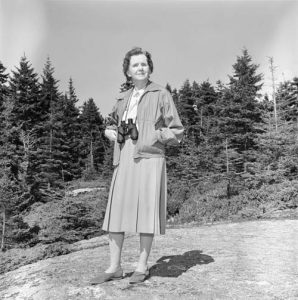Silence And Wonder: Rachel Carson And The Power Of Words
“Nothing in science has any value to society if it is not communicated.” – Anne Roe, 1952

Rachel Carson, author of Silent Spring, at her summer home in Boothbay Harbor, Maine. (Photo by CBS … [+]CBS via Getty Images
Last week the Environmental Protection Agency (EPA) announced that PFAS (perfluoroalkyl and polyfluoroalkyl substances), often referred to as “forever chemicals,” must be removed from drinking water. Carson’s book, Silent Spring, published in 1962, is often credited with galvanizing the creation of the EPA and building the momentum for agencies to regulate chemicals and other pollutants to protect human and environmental health.
Beyond its influence on environmental regulation, the book has been broadly recognized as one of the primary catalysts for the environmental movement writ large. Reflecting its distinctive and outsized impact, Silent Spring is the only environmental book on this list of “the 50 most influential books of all time.” It ranks fifth in the Modern Library List of best 20th Century Non-Fiction—the only environmental book on a list of one hundred—and 16th on Discover Magazine’s list of the greatest science books (ahead of her are luminaries such as Darwin, Aristotle, Newton and Einstein, and Silent Spring is the highest ranked book on environmental issues). 04-16-24






